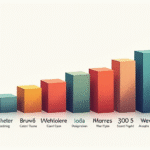Economic Stagnation and Challenges Faced by Sheinbaum’s Administration
The administration of Claudia Sheinbaum is prioritizing the evident economic stagnation, which has become unavoidable. The slowdown is compounded by the legacies of López Obrador, ongoing uncertainty surrounding the new judicial system, and lingering tariffs imposed by Trump on strategic industries. In this context, the government aims to send signals of confidence to stimulate investment and position the healthcare industry as a growth engine.
Key Initiatives Launched by Sheinbaum in the Past Month
In the past month, President Sheinbaum, accompanied by Economy Secretary Marcelo Ebrard and Health Secretary David Kershenobich, announced three crucial initiatives during a morning press conference on July 3rd:
- Decreto Farmacéutico: This decree outlines a long-awaited pharmaceutical industrial policy, prioritizing domestic companies setting up plants in Mexico starting from 2026, with investment commitments proportional to government purchases (approximately 300,000 million pesos annually).
- Investment Announcements: Four national pharmaceutical companies committed to investing 10,480 million pesos within the framework of Plan México.
- Simplification Agreement for Cofepris: Published in the Official Gazette (DOF) on July 4th, this agreement aims to expedite and unblock around 4,000 pending permits.
Investment Details and Job Creation
The investment announcements include:
- Laboratorios Kener: Investing 5,180 million pesos in Toluca to triple capacity, including advanced therapies like CAR-T cells (unique in Latin America), creating 800 direct jobs.
- Genbio: Allocating 4,000 million pesos for the first human plasma fractionation plant in Chalco, generating 100 specialized jobs.
- Alpharma BioGenTec: Contributing 800 million pesos in Azcapotzalco to produce biotechnological medicines, creating 110 direct and 310 indirect jobs.
- Neolsym: Investing 500 million pesos in Ecatepec and Jiutepec to manufacture raw materials, generating 120 direct jobs and 500 indirect ones.
These investments will create over 1,130 direct jobs and 2,700 indirect ones. While it’s not enough to meet the needs, it represents progress in recognizing this sector’s potential.
Positioning Mexico as a Regional Pharmaceutical Leader
These three signals—the decree, investments, and Cofepris simplification—aim to generate confidence and position Mexico as a regional leader in pharmaceutical production, with export ambitions towards markets like the Middle East, Africa, and Asia. However, this is a long-term goal, and many factors need alignment along the way.
Challenges Ahead
Despite these challenges, the healthcare industry presents a unique opportunity. Success hinges on effective implementation and a favorable environment to materialize. Mexico has the potential to become a regional pharmaceutical hub, but the path must include:
- Transparency in tenders
- Legal stability to alleviate fears from the judicial reform
- Competitive incentives compared to countries like India
- Improvements in infrastructure for production and export facilitation
Key Players: Amelaf and Grupo Ángeles Laboratory
In the presidential announcement on pharmaceutical investments, a noteworthy detail emerged: three of the four companies—Alpharma, Genbio, and Neolsym—are members of the Mexican Pharmaceutical Laboratories Association (Amelaf). This reflects their active and expanding laboratories within the association. Kudos to Amelaf’s president, Luis Verduzco, and executive president Juan de Villafranca for their active collaboration with the government.
The exception is Laboratorios Kener, acquired by Grupo Empresarial Ángeles (Olegario Vázquez Aldir’s hospital network) in December 2024. This acquisition extends Ángeles’ influence into pharmaceutical production with export aspirations.






